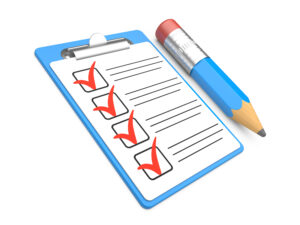by J.C. Martin, Guest Contributor
(Editor’s Note: I’m thrilled to share with you a contribution by one of my friends who’s always good for a smile as well as sensible preparedness wisdom–J.C. Martin. Give him a warm welcome, Friends!)

Preparedness Pro
Those who have prepped for a while know that, although it’s wise to be ready for a monetary collapse or the breakdown of civilization, the likeliest use of their preparations will happen during ordinary “bad times.” Natural or manmade catastrophes and economic difficulties are the times when you’re going to dig into your stockpiles—and find out how prepared you actually are.
Times of extreme privation, such as a loss of resources, a blizzard or hurricane, a prolonged health issue, or an extended period without income, will quickly become a means to evaluate the degree and efficacy of your preparedness. While you’re living off your preps—even though you may have no money left and no money coming in—there are still things you can do to improve your prepping.
1. Clear out the inventory.
Check your stockpile; if you have foods that have been in storage for a while, it’s time to use or get rid of them. Your limited storage space is more valuable if you free it up to fill with things that are more useful to you.
Examples:
- You discovered that you didn’t like black rice but you still have two pounds left? Start slipping it into soups and stews.
- A box of unopened self-rising flour that’s a few years old? Bake some cakes until it’s gone.
- Unopened gallons of corn and canola oils, but you don’t use them since discovering they’re bad for you? Use them as fuel for oil lamps.
2. Make a list and check it twice.
As you start eating through your stores, you’ll find that you run out of certain things long before you anticipated—and also that you bought more of other things than you’ll ever use. Keep track of both categories; when your situation improves, revise your restocking plans accordingly.
Examples:
- You have three big, club-size containers of black pepper—but because you use it only a pinch at a time, after a year, you still have two unopened and most of the third. No need to buy black pepper going forward.
- You just opened your last package of cocoa powder—you never realized how much you’d need that chocolate fix when the chips are down. Double or triple that quantity when you’re back on your feet.

Keep a checklist of your preparedness items and rotate them
3. Adapt sooner rather than later.
If you procrastinate with certain things, you will later realize—with regret—that taking those actions at an earlier time would have increased the longevity of your preps. Don’t wait; put those plans into action as soon as possible. This is particularly critical in cold-weather months; when you have no money to buy more fuel, you want to stretch the fuel you have, to make it last as long as possible.
Examples:
- If you know that you’re comfortable with the thermostat set at 62°, try setting it at 58° and wearing some extra layers around the house. You may obtain the same comfort level with less fuel expenditure.
- On days when the outside temperature is above 40° (or 45°, or 50°; preference varies with each person), turn off your thermostat entirely during the daytime. This tip and the previous one will buy you at least a few days of extra fuel usage during the heating season.
4. Find creative ways to accomplish tasks.
If you don’t have a dollar left to buy a tool or a tomato, then you’ll be forced to discover another way to do what needs to be done. Your brain will prove to be the best prepping tool that you could have. This is another lesson that applies well to wintertime.
Examples:
- Using some scrap lumber and old flannel curtains, make an old-fashioned canopy frame to put over your bed. The curtain will retain some of your body warmth at night, surrounding you with a cushion of warmer air—with no fuel expended. Extra benefit: the curtains, blocking any ambient light in your bedroom, may help you to sleep more soundly.
- A good way to stay warm is to exercise, and you don’t need to leave your house to do so. Pushups, situps, and squats can be done indoors; you can also do lunges in your hallway or even walk repeatedly up and down the stairs. Failing all that, hours of cleaning up around the house will warm you considerably.
5. Don’t be hesitant about using your stuff.
Too many people with a preparedness mindset think like this: “I have 50 cans of baked beans and 100 D batteries; I need to make sure I have those beans and batteries next week—and next month—and six months from now…” Your preparedness stores aren’t there simply for you to keep inventory or as exhibits in The Museum of Preparedness. They’re there for you to USE when they’re needed: in a blizzard, after a hurricane, during a period of extended unemployment. Don’t go crazy—you must still exercise discipline—but don’t be afraid to use your stuff … and have faith that, in good time, God will provide for you and give you a way to reestablish your stores.
Examples:
- You have a crate full of candles for emergency lighting. When your power’s out, you don’t need to burn 50 candles at once to light up your room like Broadway—but you do need light. Light a few candles and don’t think twice about it.
- You’ve got a bag of chocolate bars as a little treat for when you’re feeling down. Don’t eat them all at once, but have one when necessary to lift your spirits—and enjoy it!



3 Comments
Carolyn Nelson · March 14, 2015 at 4:28 am
What excellent thoughts and
What excellent thoughts and tips! Thank you!
Cheryl · March 14, 2015 at 1:20 pm
Some really excellent tips
Some really excellent tips here. Thanks for sharing, and welcome J.C.!
Carrie Vencaluskas · March 21, 2015 at 4:43 am
I appreciate the insight here
I appreciate the insight here – valuable information for preppers new to the game and experienced. Your article is a very realistic approach to prepping. I see how falling on some hard times (which is sadly more and more prevalent with existing economic conditions this country is facing) could actually be a great testing ground for seeing how your survival plan and resources actually pan out.
Comments are closed.